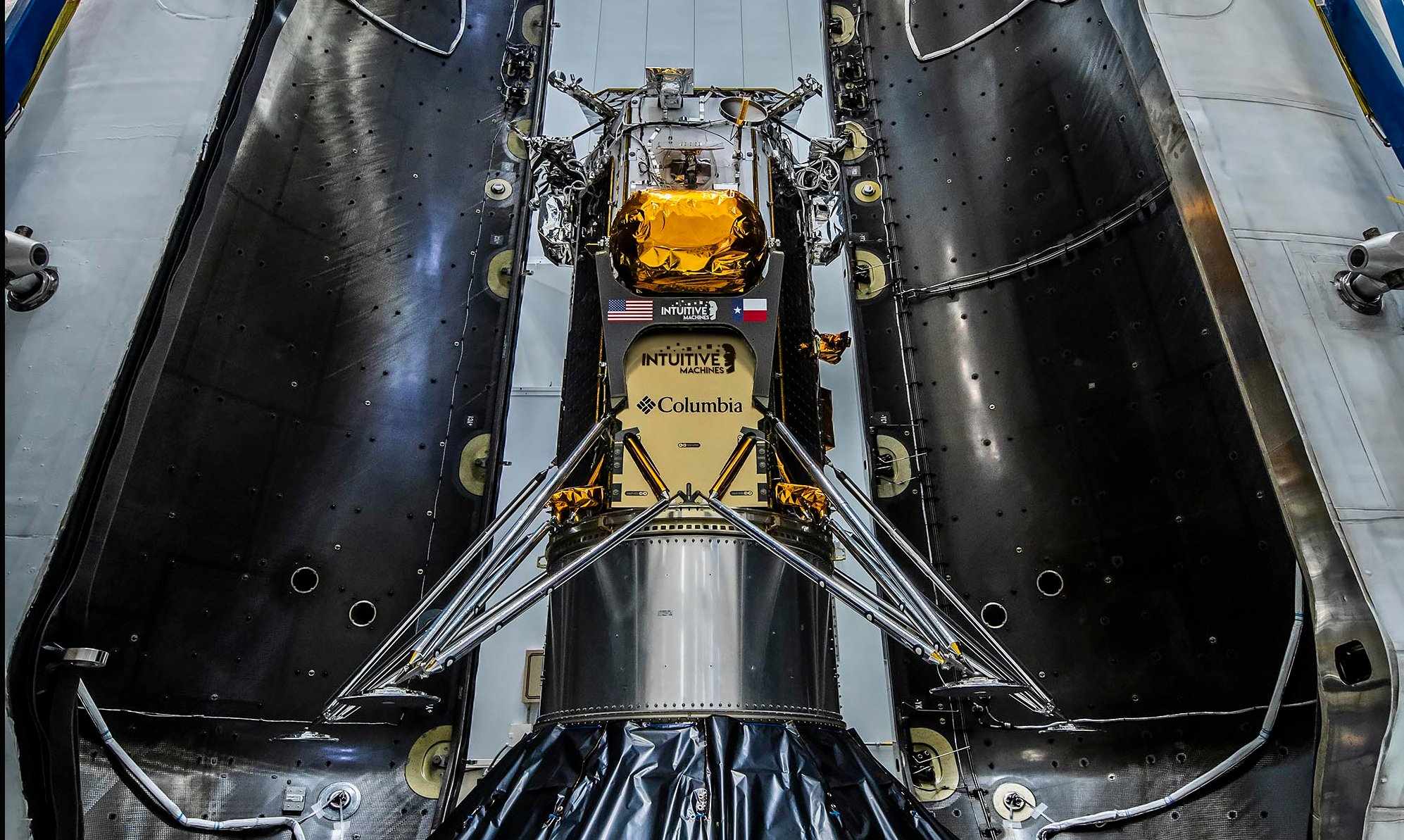
SpaceX and Intuitive Machines (IM) are targeting 12:57 a.m. EST Wednesday to launch the second uncrewed mission to the Moon under NASA’s Commercial Lunar Payload Services (CLPS) contract. Following last month’s disappointing loss of Astrobotic’s Peregrine spacecraft—which succumbed to a propellant leak, rendering it unable to achieve its planned lunar landing—IM’s first Nova-C lander, named “Odysseus” in honor of the ancient Greek hero of the Trojan War, will deliver ten payloads for NASA, the International Lunar Observatory (ILO), the University of Colorado at Boulder, Embry-Riddle Aeronautical University and Louisiana State University and others to alight close to the Moon’s South Pole on 22 February. If successful, it will mark the first U.S. soft-landing on the lunar surface since Apollo 17 in December 1972.
Launching Odysseus from historic Pad 39A at the Kennedy Space Center’s (KSC) in Florida will be none other than SpaceX’s B1060 booster core, which becomes only the fourth Falcon 9 to reach an 18th flight. First flown in June 2020 and used most recently last fall, she has successfully delivered 626 Starlink internet communications satellites into low-Earth orbit, together with a pair of multi-payload Transporter “stacks”, a pair of geostationary-bound communications satellites and the third Block III Global Positioning System (GPS) navigation and timing satellite. B1060 also secured personal accolades as the first Falcon 9 in the fleet to reach 13 flights in June 2022.
Tomorrow morning’s IM-1 launch campaign will begin about 2.5 hours prior to liftoff when teams will load liquid oxygen and methane propellants aboard the Odysseus lander, before kicking off fueling of the Falcon 9 itself. Should Wednesday’s launch be missed, SpaceX also has availability to support a second “instantaneous” T-0 at 1:05 a.m. EST on Thursday.
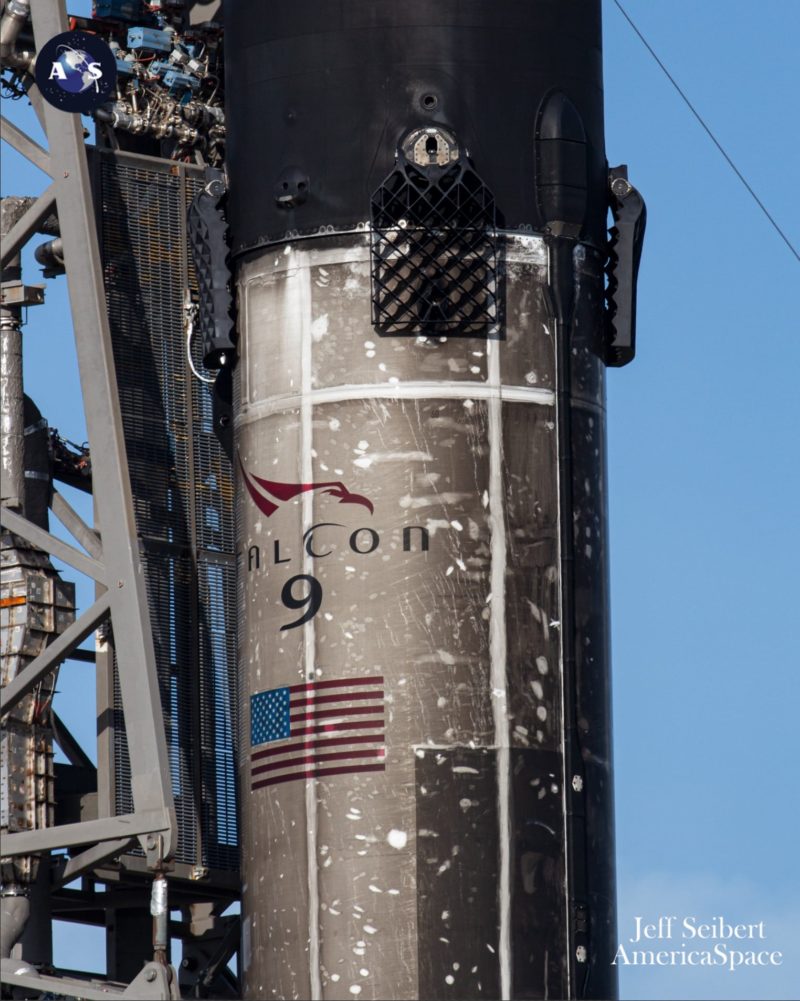
Following launch, B1060 will power the stack uphill for the opening 2.5 minutes of flight, before returning to touch down on Landing Zone (LZ)-1 at Cape Canaveral Space Force Station, Fla., marking the fifth solid-ground landing of a Falcon 9 core in 13 missions so far in 2024. The second stage will go on to execute a pair of “burns” of its Merlin 1D+ Vacuum engine—a first lasting six minutes, followed by a lengthy cruise, ahead of a final burn of 53 seconds some 41 minutes into the mission—to pre-position IM-1 for deployment at T+48 minutes and 24 seconds.
NASA unveiled CLPS in May 2018 to encourage the U.S. commercial space industry to develop, build and fly payload-laden landers to the Moon ahead of a human return to our closest celestial neighbor later in the 2020s. Mission tasks would include sample return, lunar resource prospecting and the demonstration of In-Situ Resource Utilization (ISRU) to help “reduce the risk when building landers for humans”.
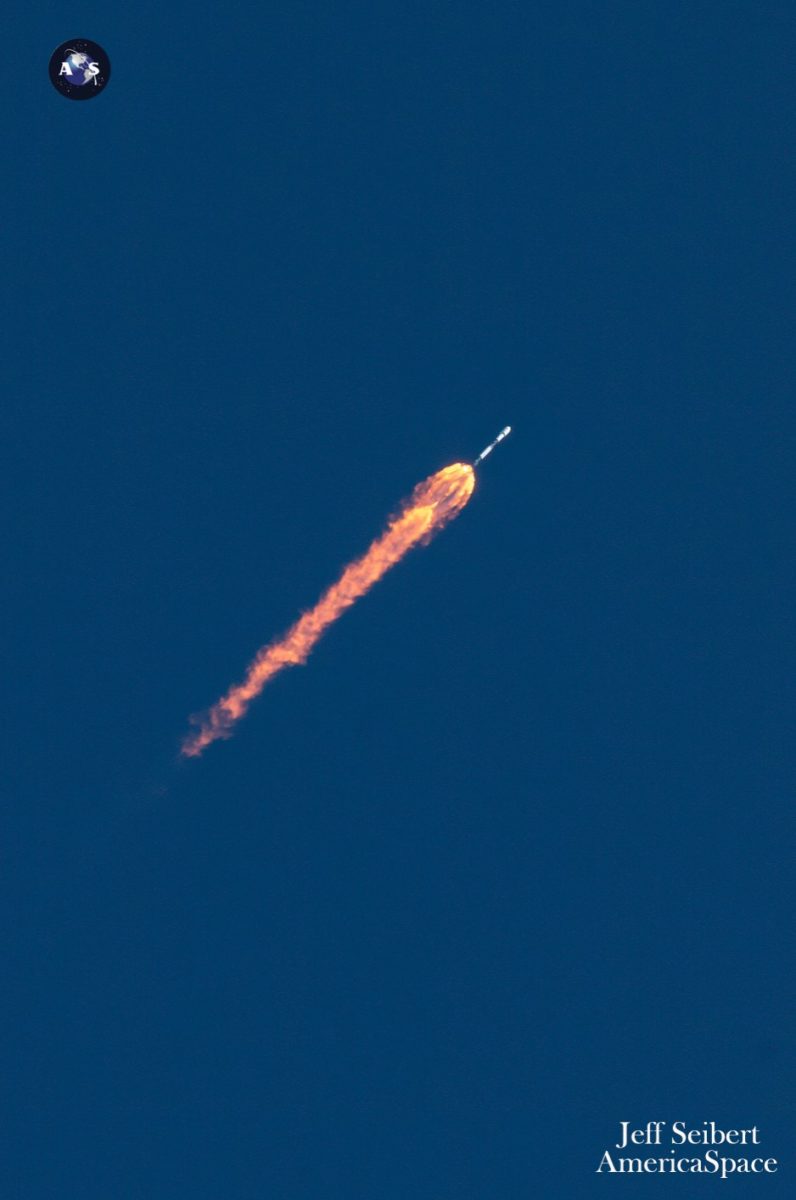
Houston, Texas-headquartered IM was one of nine U.S. companies selected by NASA as eligible to bid for CLPS missions in November 2018. Six months later, the space agency awarded IM contracts worth $77 million to deliver “as many as five payloads” emphasizing plume-surface interactions, space weather/lunar surface interactions, radio astronomy, precision landing techniques and a communications and navigation node for future autonomous navigation technologies, to the Moon’s Oceanus Procellarum (the Ocean of Storms) by July 2021.
As mission planning progressed, in January 2020 NASA fleshed out additional detail on the nature of its IM-1 payload suite. After Wednesday’s launch, IM-1 will spend about nine days in transit to the Moon, before touching down on 22 February and spending about ten operational days on the lunar surface.
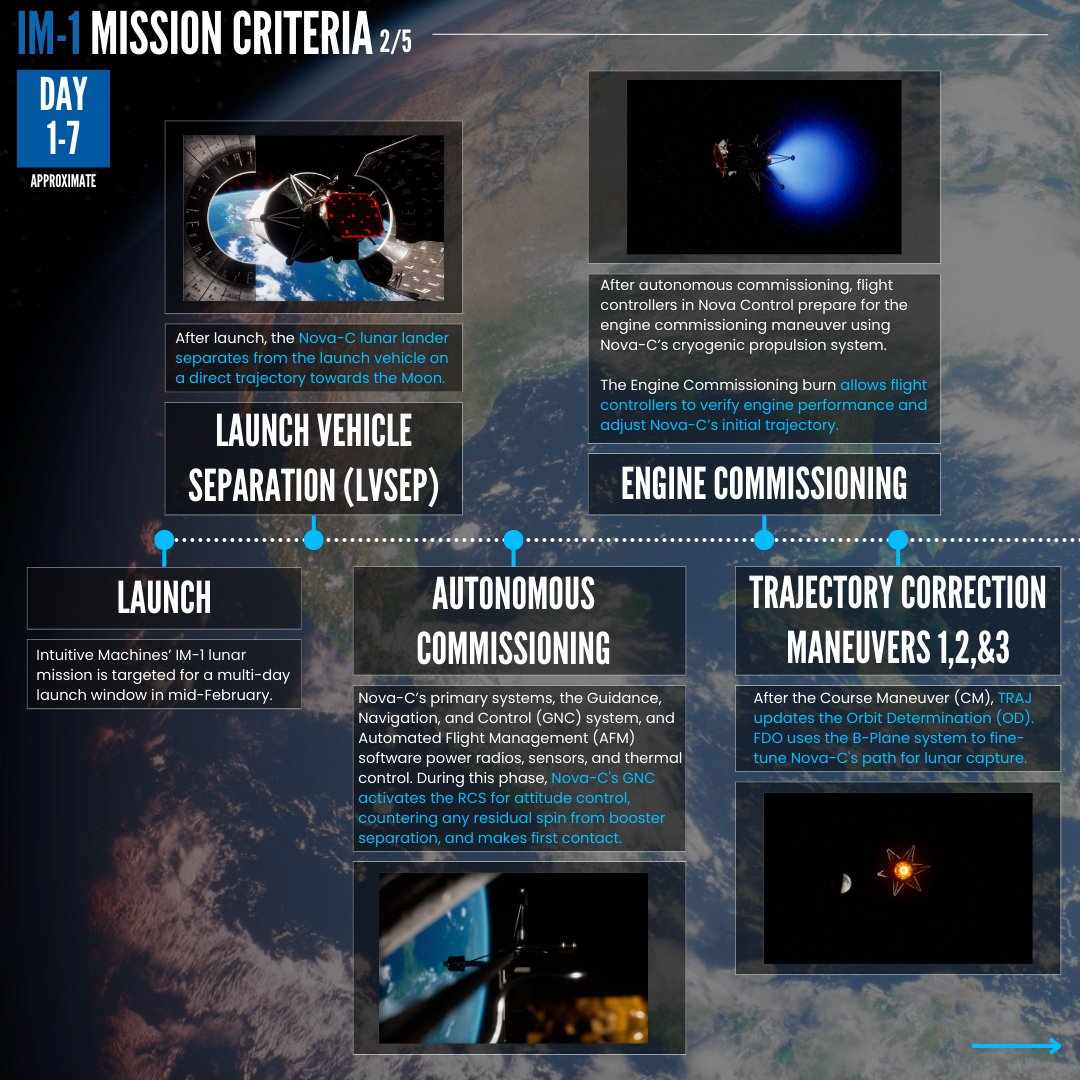
Developed by NASA’s Goddard Space Flight Center (GSFC) in Greenbelt, Md., the Laser Retroreflector Array (LRA) comprises eight passive optical retroreflectors which will furnish precision laser-ranging and function as a permanent location marker on the Moon for decades to come. Each retroreflector measures about 0.5 inches (1.25 centimeters) in size.
And the 28.6-pound (13-kilogram) Low-Frequency Radio Observations for the Near Side Lunar Surface (ROLSES), a joint effort between GSFC and the University of Colorado at Boulder, will measure photoelectron sheath density and scale height using a suite of four antennas about eight feet (2.5 meters) in length. ROLSES seeks to account for the variety of radiation generated by cosmic phenomena and human activity and will aid the design of future mission architectures by demonstrating effects upon antenna responses or larger lunar radio observatories with equipment on the surface.
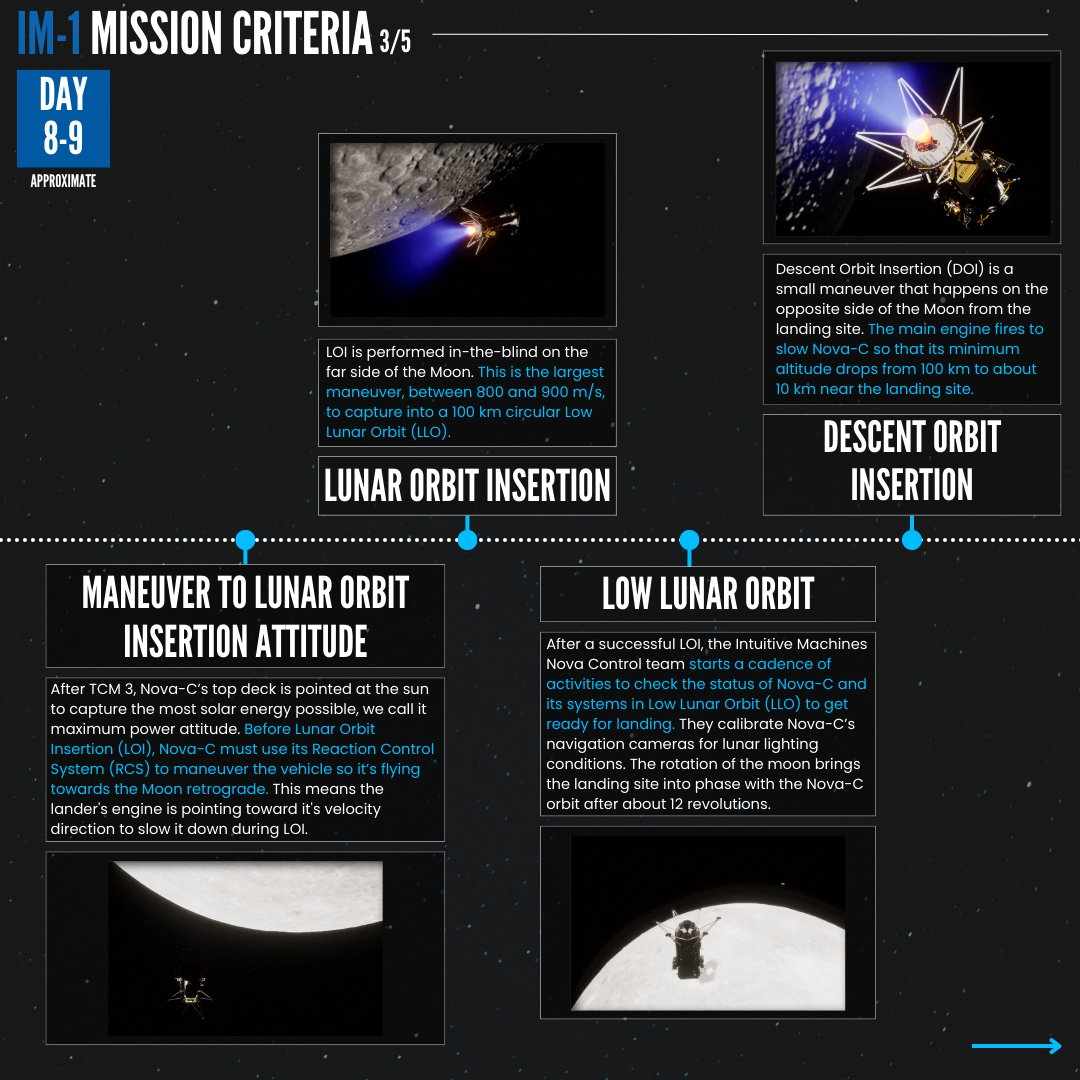
The 33-pound (15-kilogram) Navigation Doppler Lidar for Precise Velocity and Range Sensing (NDL), built by NASA’s Langley Research Center (LaRC) in Hampton, Va., will provide extremely precise velocity and range sensing during IM-1’s descent and landing. The spacecraft carries its own navigation and landing system, so although NDL will be trialed in the lunar environment its data is not considered mission-critical for a safe touchdown on the Moon.
Also originating from LaRC is the 13.2-pound (6-kilogram) Stereo Cameras for Lunar Plume-Surface Studies (SCALPSS) which will capture video and still imagery using four tiny cameras of the behavior of the lander’s exhaust plume as it impinges upon the Moon’s surface. Using a method known as “stereo photogrammetry”, overlapping SCALPSS images will produce three-dimensional digital elevation maps of the surface, yielding an accurate prediction of the effects of lunar dust and soil upon landing and the depth of erosion.

“If we’re placing things—landers, habitats—near each other, we could be sandblasting what’s next to us, so that’s going to drive requirements on protecting those other assets on the surface, which could add mass, and that mass ripples through the architecture,” said Principal Investigator Michelle Munk. “It’s all part of an integrated engineering problem.”
A CubeSat-sized experiment from MSFC, the Lunar Node-1 Navigation Demonstrator (LN-1) seeks to demonstrate autonomous navigation in support of future surface and orbital operations. It is reliant upon the Multi-Spacecraft Autonomous Positioning System (MAPS), a network computer navigation software suite previously tested in 2018 aboard the International Space Station (ISS) using NASA’s Space Communications and Navigation (SCaN) testbed.
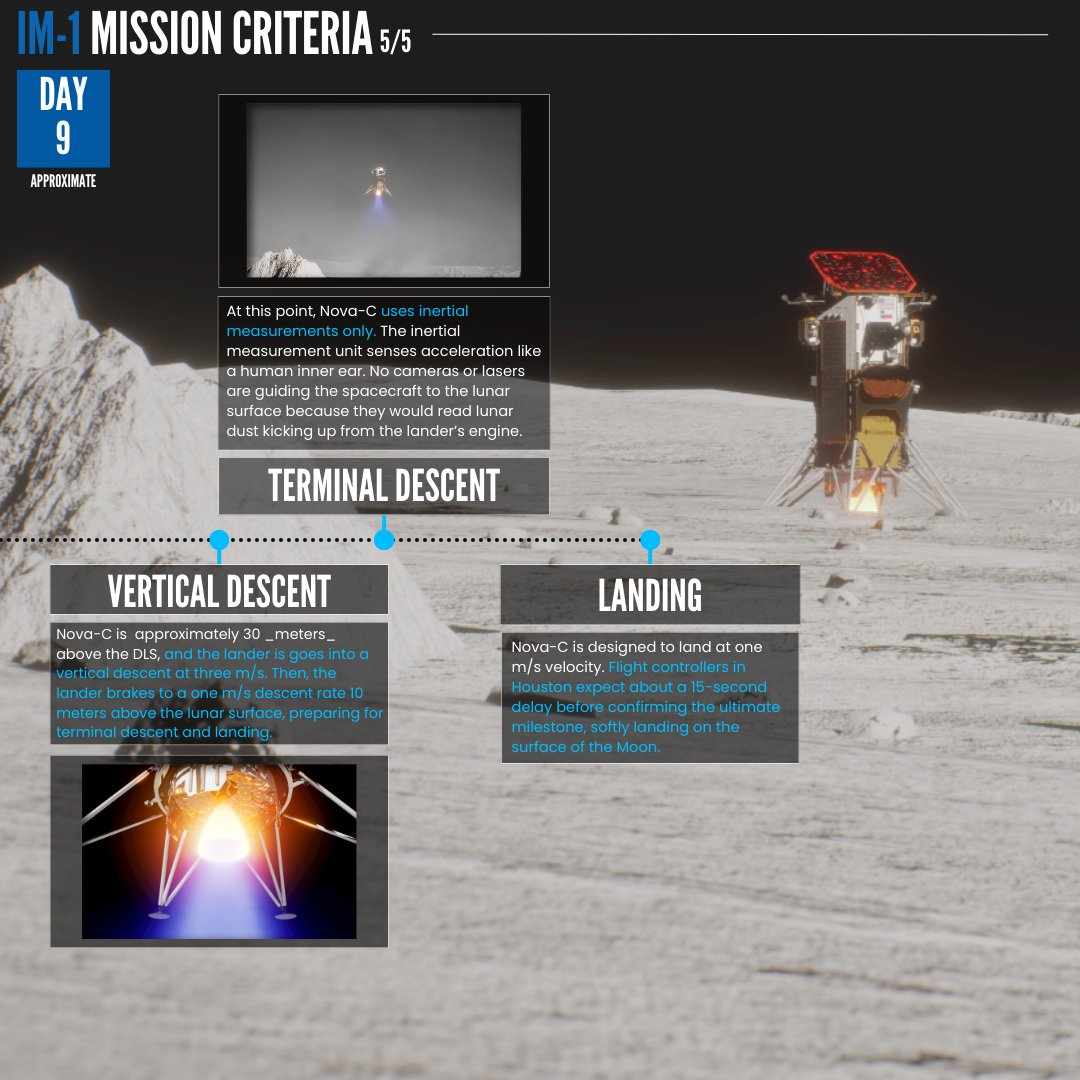
Moving forward, NASA envisages that technology evolved from LN-1 will produce networks of lunar-based “lighthouses”, offering “sustainable, localized navigation assets that enable lunar craft and ground crews to quickly and accurately confirm their position instead of relying on Earth”. The result, the agency expects, is a growth from a singular lighthouse on LN-1 “into something more akin to a bustling metropolitan subway network, wherein every train is tracked in real time as it travels its complex route.”
A sixth NASA-sponsored experiment was also added to the IM-1 payload in 2020. The 4.4-pound (2-kilogram) Radio Frequency Mass Gauge (RFMG) will estimate propellant quantities in fuel tanks under microgravity or low-gravity conditions. “Because of the very small amount of gravity, fluid doesn’t settle to the bottom of propellant tanks, but rather clings to the walls and could be anywhere inside,” said Lauren Ameen, deputy manager of the Cryogenic Fluid Management Portfolio Project Office at NASA’s Glenn Research Center (GRC) in Cleveland, Ohio, which is spearheading this experiment.
“This makes it really challenging to understand how much propellant you have within your tank, which is really important to maximize your mission duration and plan how much you need to launch with.” The RFMG hardware employs radio waves and antennas inside a tank to measure available propellant quantities and this mission will represent its first long-duration test on a standalone spacecraft.
Several other experiments will also ride the Odysseus lander down to the Moon’s surface. Embry-Riddle Aeronautical University in Daytona Beach, Fla., will supply its EagleCam CubeSat camera, which will be ejected from the lander at an altitude of about 90 feet (30 meters) above the surface, touching down somewhere close to Odysseus’ own landing spot. It will attempt to capture the first third-person views of a lunar landing.
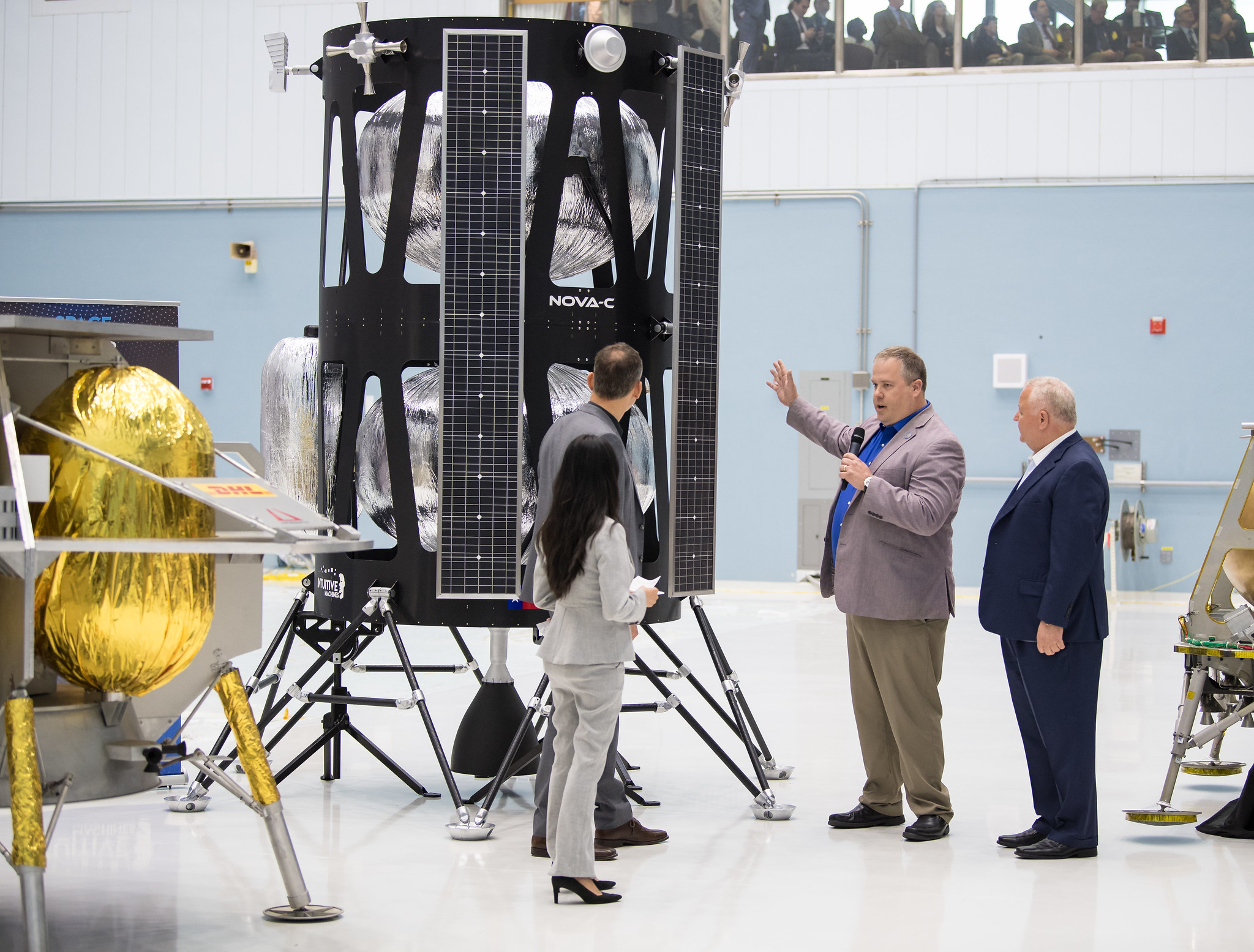
Louisiana State University (LSU) is also providing its student-developed Tiger Eye-1 radiation monitoring instrument, while the International Lunar Observatory is supplying its ILO-X precursor to a planned astrophysics observatory for emplacement near the Moon’s South Pole. Equipped with a pair of small imagers, ILO-X will attempt to capture the first views of the Milky Way Galaxy and other celestial observations from the lunar surface using wide and narrow field-of-view optics. Also aboard Odysseus is Lunaprise, is a 0.4-pound (200-gram) plate affixed to the side of Odysseus containing information about Earth.
Finally the Moon Phases sculpture, created by artist Jeff Koons, looks set to become the first sculpture to reach the Moon since the famous “Fallen Astronaut” was placed onto the surface at Hadley-Apennine by Apollo 15 Commander Dave Scott in August 1971. Via his personal website, Mr. Koons describes Moon Phases as a “hopeful and transcendent” project, offering viewers “a sense of perspective about their place in the vast Universe, encouraging profound reflection and contemplation”.
“Centering on the Moon as a symbol of human curiosity and the desire to achieve,” the summary continues, “Moon Phases comprises 125 unique works, each consisting of three components: a sculpture that will be installed on the Moon in perpetuity—displayed in a sustainably built, fully transparent, compartmentalized cube—together with a sculpture that will stay on the Earth and a Non-Fungible Token (NFT) that corresponds with the sculptures on the Moon and the Earth.”
Originally targeted to alight at the Ocean of Storms, IM-1’s landing site was changed in May of last year to the South Pole of the Moon. “The decision to move from the original landing site in Oceanus Procellarum was based on a need to learn more about terrain and communications near the lunar South Pole, which is expected to be one of the best locations for a sustained human presence on the Moon,” NASA explained.
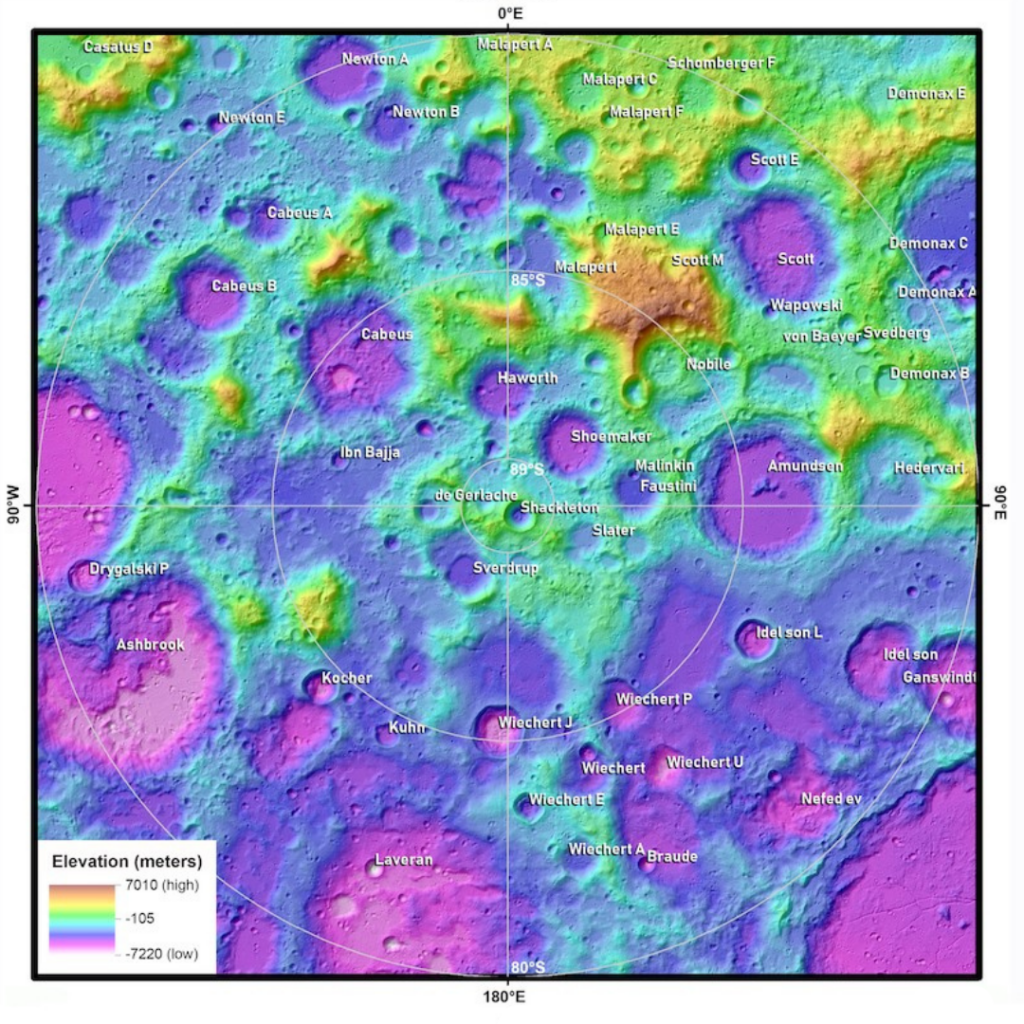
IM-1 will land near Malapert-A, a 15-mile-wide (24-kilometer) “satellite crater” of the three-times-larger Malapert impact basin near the South Pole at 80.4 degrees South lunar latitude. Its intriguing location has long been proposed to site a transmitter for a human expedition to the region and also resides within the radio “shadow” of transmissions from Earth, blocking radio noise from the home planet, rendering it ideal for the emplacement of a future radio telescope.
With landing targeted on 22 February, the six-legged Odysseus has the capacity to relocate to a secondary landing site by executing a vertical takeoff, cruise and vertical landing using its liquid oxygen and methane-fed VR-900 engine. Its on-board solar panels will furnish about 200 watts of electrical power for the payload.




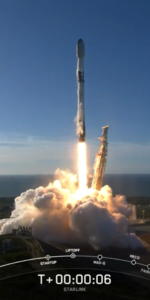
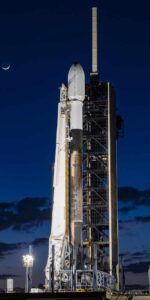
7 Comments
Leave a Reply7 Pings & Trackbacks
Pingback:As IM-1 Launch Moves to Thursday, SpaceX Targets Three-Mission Record-Setter - AmericaSpace
Pingback:As IM-1 Launch Moves to Thursday, SpaceX Targets Three-Mission Record-Setter - SPACERFIT
Pingback:First Valentine’s Day Falcon Flies, Second Scheduled Later Tonight - AmericaSpace
Pingback:SpaceX Launches IM-1, Nova-C Lander Powers Up, Communicates, Begins Multi-Day Voyage to Moon - AmericaSpace
Pingback:SpaceX Completes 300th Falcon 9 Mission, Continues Impressive 2024 Launch Cadence - AmericaSpace
Pingback:SpaceX Completes 300th Falcon 9 Mission, Continues Impressive 2024 Launch Cadence - SPACERFIT
Pingback:Crew-8 Launch Realigns to Saturday, Six-Month Space Station Stay Ahead - AmericaSpace